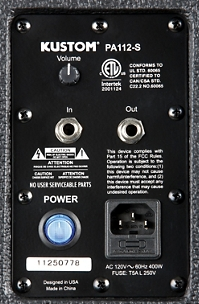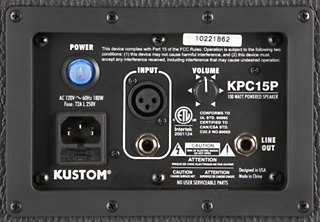The key bit of information is that it is very important to have a calibrated full-range studio monitor system, where as I define it, a "calibrated full-range" studio monitor system has a flat equal loudness curve running from 10-Hz to 20,000-Hz at 85 dB SPL, where the requirements I add are (a) that it goes subsonic to 10-Hz and (b) that it does this over the entire range (10-Hz to 20,000-Hz) at 85 dB SPL, where the reason for 85 dB SPL is explained later in this post, although some of the explanation is implied and requires studying the equal loudness curves (see below) and knowing that 85 dB SPL is at the practical upper limit of what normal human hearing can tolerate at least for a few hours each day without causing hearing problems or damage, which explained another way is the sound pressure level (SPL) that the conductor of an orchestra and the folks sitting on the front row typically enjoy, at least during the louder parts of songs . . .
[NOTE: The following drawing shows another way to represent a flat equal loudness curve, but instead of being literally "flat", it is curvy to emphasize the differences in volume levels required to attain equal loudness perception. There is another way to draw it where the curve literally is a flat horizontal line, and this is where the term "flat" originates in this context, which among other things is an excellent reason for musicians to stay awake in mathematics classes. This drawing shows the reason for what I call the "big and heavy" rule of acoustic physics, which specifically refers to reproducing subsonic and deep bass at equal perceived loudness to midrange notes at the "dip", which runs from approximately 2,000-Hz to 5,000-Hz, where the facts of the matter are (a) that reproducing subsonic and deep bass requires moving a lot of air and (b) moving a lot of air requires large woofers and powerful amplifiers, both of which are "big and heavy" physical and electromagnetic devices (magnets, transformers, cases and enclosures, woofer cones, metal frames, and so forth) . . . ]

The problem is that for all practical purposes there are no currently available commercial-off-the-shelf (COTS) calibrated full-range home studio monitor systems available anywhere on this planet, although with a bit of help from either (a) a Behringer DEQ2496 UltraCurve Pro Mastering Process and companion calibrated condenser microphone or (b) the ARC System 2 and its calibrated condenser microphone, it is possible to do the required calibrations for the approximately $7,500 top-of-the-line JBL home studio monitor system . . .
DEQ2496 UltraCurve Pro Mastering Processor (Behringer)
ARC System 2 (IK Multimedia)
[NOTE: Recently, JBL has regained its focus and has released a commercial-off-the-shelf (COTS) calibrated full-range professional studio monitor system with an essentially flat equal loudness curve running from 20-Hz to 40,000-Hz, which certainly meets my criteria, although the high-frequency aspects probably only can be appreciated by bats, cats, and dogs; and for a few of the modern popular music genres will need to be augmented with custom deep bass subwoofers. Coming in at an attractive discount price of $20,000 (US) for the loudspeakers and power amplifiers, I think this might be the foundation for a nice system for those fortunate folks who can afford it. In particular, note (a) that it is not a "bookshelf" system; (b) that it requires two external CROWN power amplifiers; (c) that it does not appear to go subsonic, although I think it certainly can go subsonic; and (d) that it meets the "big and heavy" criteria imposed by the combination of GOD, Sir Isaac Newton, and the rules of the universe as we know it, which includes having "big and heavy" 15" woofers, with each two-way loudspeaker unit weighing 58.5 pounds and each required Crown i-Tech HD 5000 power amplifier weighing 28 pounds, which is a stellar bit of reality that provides the clue to one of the reasons there are no "big and heavy" COTS studio monitor systems for all practical purposes, since (a) it costs significantly more to manufacture "big and heavy" stuff and (b) it costs significantly more to ship "big and heavy" stuff, where the revealing bit of information is that while Sweetwater Musical Instruments and Pro Sound sells the JBL M2 Series studio monitor system at a discount for $20,000 (US), which includes the JBL M2 Series 15" two-way loudspeaker units and a pair of Crown I-Tech 5000 HD power amplifiers, this prices does not include free shipping, noting that I like Sweetwater and am a happy customer . . . ]
M2 Series Master Reference Monitor System (JBL)
I-Tech HD Series Power Amplifiers (Crown Audio)
[NOTE: This is the calibration system for JBL studio monitors, but it also works on other studio monitors . . . ]
MSC1 Monitor System Controller (JBL)
[NOTE: This is the high-end but lower cost LSR6300 Series, which with the MSC1 Monitor System Controller has a typical discount price of $7,500 (US), since to be full-range it requires a pair of the matching deep bass subwoofers. I think this has the potential to be a full-range system, but it requires additional hardware to push its deep bass lower . . . ]
LSR6300 Series Studio Monitors (JBL)
Another possibility is the PreSonus Sceptre S8, since its stated frequency at -10 dB is "38 Hz - 23 kHz", which suggests that it might be capable of being pushed lower into the deep bass with the aforementioned Behringer unit or the ARC System 2, although (a) I cannot verify this and (b) it has 8" diameter woofers, which is not so encouraging with respect to the "big and heavy" rule of acoustic physics . . .
[NOTE: If the PreSonus Sceptre S8 loudspeakers cannot be pushed into the subsonic range, adding a pair of Kustom PA112S powered deep bass subwoofers will accomplish this worthy goal, hence the primary aspect is that a pair of Kustom KPC15P and PA112S powered loudspeakers and deep bass subwoofers costs the same as one PreSonus Sceptre S8 loudspeaker, hence it is a budget issue more than anything else. And for reference, I mention the PreSonus Sceptre S8 loudspeakers, because they are the only somewhat affordable COTS studio monitors that go downward by design at least to 38-Hz, which puts them in what I consider to be the "Honest" category (as contrasted to the "Sneaky Weasel" category); and I state this because at standard tuning ("Concert A" = 440-Hz) the low-pitch "E" string of an electric bass or string bass is 41.203-Hz, and in my view any studio monitor system that cannot reproduce the note of the open low-pitch "E" string of an electric bass or string bass at standard tuning at equal loudness to all the other notes is a piece of junk, although if this deficiency can be corrected by adding deep bass subwoofers to the system, then it is fine with me, since upper bass, midrange, and high frequencies are easy to reproduce . . . ]
Scepter S8 (PreSonus)
~ ~ ~ Continued in the next post ~ ~ ~

